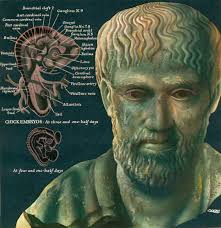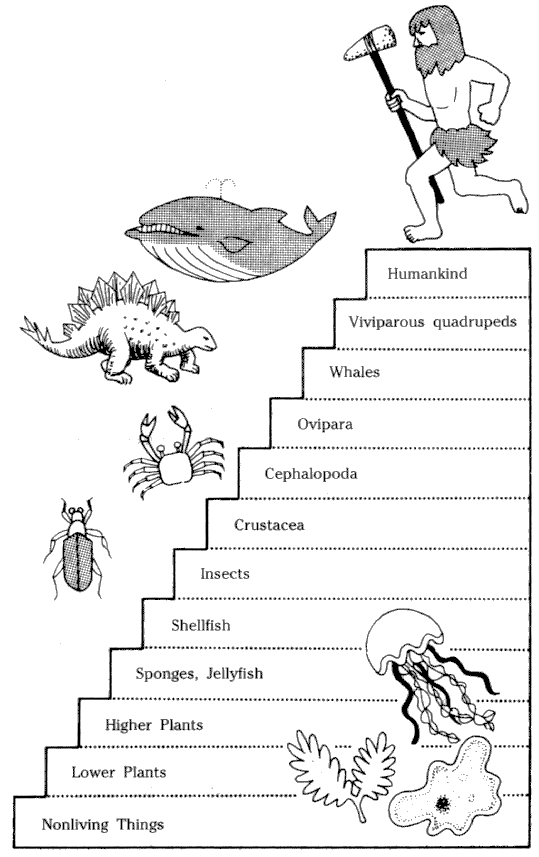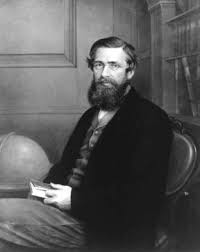Totaled 3/29 Mr F
Closed
Carl Linnaeus Systema Naturae
The first edition of Systema Naturae was printed in the Netherlands in 1735. It was an eleven page work. By the time it reached its 10th edition (1758), it classified 4,400 species of animals and 7,700 species of plants. In it, the unwieldy names mostly used at the time, such as "Physalis annua ramosissima, ramis angulosis glabris, foliis dentato-serratis", were supplemented with concise and now familiar "binomials", composed of the generic name, followed by a specific epithet - in the case given, Physalis angulata. These binomials could serve as a label to refer to the species. Higher taxa were constructed and arranged in a simple and orderly manner. Although the system, now known as binomial nomenclature, was developed by the Bauhin brothers (see Gaspard Bauhin and Johann Bauhin) almost 200 years earlier, Linnaeus was the first to use it consistently throughout the work, also in monospecific genera, and may be said to have popularized it within the scientific community
Totaled 3/20/10 Mr F
Closed 3/29/10 Mr F
Aristotle (384-322 BCE)  < sculpture of Aristotle
< sculpture of Aristotle
Aristotle was one of the first ever to come up with even a quasi-evolutionary speculation about the nature of living things. He saw that there was a blurred distinction between living and nonliving matter, and between plants and animals, and between animals and humans. In his philosophy, all things strove toward perfection (the divine), "evolving" through many intermediate forms in the process.
Aristotle was a Greek philosopher, a student of Plato and teacher of Alexander the Great. His writings cover many subjects, including physics, metaphysics, poetry, theater, music, logic, rhetoric, politics, government, ethics, biology, and zoology. Together with Plato and Socrates (Plato's teacher), Aristotle is one of the most important founding figures in Western philosophy. Aristotle's writings constitute a first at creating a comprehensive system of Western philosophy, encompassing morality and aesthetics, logic and science, politics and metaphysics.
-
Aristotle thought that the alive beings had been created separately and who later they were changing due to a improver principle. The fossil encounter proposed the catastrophic theory that says "the life has been created often by different factors". The forms that had died were replaced by other new something different. Buffon in century XVIII indicated that the ideas of Aristotle were not certain, Darwin add that the answers given to the external stimuli were inherited, Lamarck was first in publishing the general theories of the evolution indicating that the animals divided themselves in: vertebrates and invertebrates.
The theory of the inheritance of caractéres seted out acquired: the present organisms and the parts that compose it tend to increase of size; if an organ is used constantly it tends to increase of size and the lack of use gives rise to the degeneration; the appearance of a new organ is always from a necessity; these modifications will be inherited being that the changes are cumulative. The theory of Lamarck was rejected because it was not managed to verify his ideas.
Heckel in 1821 said that the superior animal embryos happened through stages that were resembled those of the inferior ones. Van Baer (1829), indicated that the inferior and superior animal embryos are very similar to the corresponding ones in their adult stages, being based on which: the general characters of all alive being appear before the special characters, the characters of an alive being appear in order: greatest, less general, the special ones; an animal during its development leaves the form of other animals progressively; the young stages of a superior animal are like the embryos of the inferior ones.

Carolus Linnaeus (1707-1778)
 < painting of Carolus Linnaeus
< painting of Carolus Linnaeus
He believed in a divine origin and plan for all species, he recognized and acknowledged the formation of new species by hybridization in plants. His work in hierarchical taxonomy, which greatly simplified the communication of relationships between organisms, also cleared a path for future evolutionists.
Carl Linnaeus (Latinized as Carolus Linnaeus, also known after his ennoblement as was a Swedish botanist, physician, and zoologist, who laid the foundations for the modern scheme of binomial nomenclature. He is known as the father of modern taxonomy, and is also considered one of the fathers of modern ecology.
-Carolus Linnaeus, or Carl Linné (1707-1778), is considered the father of modern taxonomy for his work in hierarchical classification of various organisms. At first, he believed in the fixed nature of species, but he was later swayed by hybridization experiments in plants, which could produce new species. However, he maintained his belief in special creation in the Garden of Eden, consistent with the Christian doctrine to which he was quite devoted. He still saw the new species created by plant hybridization to have been part of God's plan, and never considered the idea of open-ended, undirected evolution not mediated by the divine.

Erasmus Darwin (1731-1802)

Painting of Erasmus Darwin
Erasmus Darwin, the grandfather of Charles Darwin, was one of the first scientists to propose a scientific theory of evolution. Though he did not reach the idea of natural selection, he did believe that species all descended from a common ancestor and that competition, a version of sexual selection, and the use and disuse of parts all contributed to the generation of new species. He also endorsed the teleological idea, later advocated by Lamarck, that unconscious striving toward perfection was responsible for some adaptations and changes of form in species.
Erasmus Darwin was an English physician who turned down George III's invitation to be a physician to the King. One of the key thinkers of the Midlands Enlightenment, he was also a natural philosopher, physiologist, abolitionist, inventor and poet. His poems included much natural history, including a statement of evolution and the relatedness of all forms of life.
Jean-Baptiste Lamarck (1744-1829)

sketch of Jean-Baptiste Lamarck
He firmly believed in the inheritance of acquired characteristics (the doctrine with which his name is now associated), evolution through use and disuse of parts, and the same striving toward perfection that Erasmus Darwin emphasized.
Jean-Baptiste Pierre Antoine de Monet, Chevalier de la Marck often just known as "Lamarck", was a French soldier, naturalist, academic and an early proponent of the idea that evolution occurred and proceeded in accordance with natural laws.
-But the overarching component of Lamarckian evolutionism was what became known as the inheritance of acquired characters. This described the means by which the structure of an organism altered over generations. Change occurred because an animal passed on to its offspring physiological changes it had undergone in its own lifetime, and those changes came about by its responding to its survival needs. The long legs and webbed feet of wading birds, for example, arose when those animals' ancestors responded to a need to feed on fish. In their attempt to wade in deeper and yet still keep their bodies dry, they would unconsciously adopt the habit of stretching their legs to their full extent, making them minutely longer in the process. This trait would be passed on to the next generation, who would in turn stretch their legs, until over many generations the wading birds' legs became those of the pelican. As the longer-legged birds waded deeper, it would be the habit of spreading the toes in order not to sink into the offshore mud, stretching the skin inbetween, that would eventually give rise to webbed feet. Conversely, the disuse of an organ would cause it to wither and disappear, which explained how snakes lost their legs. Although no part of Lamarck's theory of acquired characters has not been substantiated by modern knowledge of genetic inheritance, the process was an ingenious interpretation of observable detail.
Thomas Malthus (1766-1834)
 picture of Thomas Malthus
picture of Thomas Malthus
Thomas Malthus' work on population growth was the final inspiration for Charles Darwin, directly leading to the development of the theory of natural selection. Central to Malthus' work was the key observation that populations produce many more offspring than can possibly live under limited resources (in retrospect, this leads quite clearly to natural selection). Malthus applied his theory mainly to human populations, and believed that poverty, famine, and disease were natural outcomes of too-large population size. However, Malthus thought that such outcomes were ultimately caused by divine plan, not by impersonal forces or processes.
The Reverend Thomas Robert Malthus was a British scholar, influential in political economy and demography. Malthus popularised the economic theory of rent

A diagram of Malthus's experiments with population increase and food supply.
This is a very simple graph of Malthus's principle, but you can see how it could have influenced Darwin to come up with his ideas about natural selection and competition.

Georges Cuvier (1769-1832)

picture of Georges Cuvier
Though Cuvier was in strict opposition to the idea that evolution took place, arguing that changes in the structure of organisms would destroy its functionality. However, Cuvier's work conclusively showed the reality of extinction of species, a subject hotly debated at the time. This conclusion led the way to further analyses that emphasized evolutionary change.
Georges Léopold Chrétien Frédéric Dagobert Cuvier was a French naturalist and zoologist. Of humble working class origins, he belonged to a new class of self-made scholars who worked their way to the top of academe. Cuvier was a major figure in natural sciences research in the early 19th century, and was instrumental in establishing the fields of comparative anatomy and paleontology by comparing living animals with fossils. He is well known for establishing extinction as a fact, being the most influential proponent of catastrophism in geology in the early 19th century, and opposing the gradualistic evolutionary theories of Lamarck and Geoffroy Saint-Hilaire. His most famous work is the Le Règne Animal (1817; English: The Animal Kingdom).
-Because of the weakness of Lamarck’s theory, it was relatively easy for the French scientist, Georges Cuvier, and other critics to discredit the idea of inheritance of acquired characteristics.
Critics were quick to point out that if Lamarckianism was correct, the children of cowboys who have developed bowed legs as a result of a lifetime of riding horses would be born with bowed legs as well and the children of professional weight lifters would be born with enlarged muscles. It is obvious that these things do not occur.
Although he criticized Lamarck, Cuvier did not reject the idea that there had been earlier life forms. Cuvier was actually the first scientist to document the extinction of ancient animals and was an internationally recognized expert on dinosaurs. However, Cuvier also got in wrong, in that he rejected the idea that the previous existence of dinosaurs implied that evolution had occurred. He believed that species were fixes and did not change.
Like many other scientists of his day, Cuvier advocated the theory of catastrophism. This theory was based on the assertion that there have been violent and sudden natural catastrophes such as great floods and other very sudden physical changes to the earth. Organisms living in those areas where these sudden, violent changes had occurred were often killed off and replaced by new life forms moving in from other geographic areas. The fossil record of this type of region would show abrupt changes in species.
15.2 Ideas That Shaped Darwin’s Thinking
· Hutton and Lyell helped scientists realize that Earth is many millions of years old, and the processes that changed Earth in the past are the same processes that operate in the present.
· Lamarck proposed that by selective use or disuse or organs, organisms acquired or lost certain traits during their lifetime. These traits could then be passed on to their offspring. Over time, this process led to change in a species.
· Malthus reasoned that if the human population continued to grow unchecked, sooner or later there would be insufficient living space and food for everyone.
A little more information on Charles Lyell (1797-1875):
He was a British lawyer and the foremost geologist of his day. He is best known as the author of Principles of Geology, which popularised uniformitarianism – the idea that the earth was shaped by slow-moving forces still in operation today. Lyell was a close and influential friend of Charles Darwin.
Some information on Lamarck (1744-1829):
Jean-Baptiste Pierre Antoine de Monet, Chevalier de la Marck, often just known as "Lamarck", was a Frenchsoldier, naturalist, academic and an early proponent of the idea that evolution occurred and proceeded in accordance with natural laws.
Alfred Russel Wallace (1823-1913)
Alfred Russel Wallace was a contemporary of Darwin's who independently developed the theory of natural selection, also after reading Malthus. Wallace was well-known and respected in his own day, but has since fallen into relative obscurity. Darwin analyzed the conclusions and implications of natural selection much more thoroughly than Wallace did, and Wallace had some unusual (and not so highly regarded) political and social opinions - he became a socialist in 1890. Wallace also openly embraced spiritualism and declared that natural selection, his own theory of evolution, could not explain the human cognitive faculty.
http://www.smithsonianmag.com/science-nature/darwin.html
^^here is a great article about Alfred Russel Wallace
 Hereis a picture of Alfred Russel Wallace
Hereis a picture of Alfred Russel Wallace
 |
| |
James Ussher
1581-1656
|
The traditional Judeo-Christian version of creationism was strongly reinforced by James Ussher, a 17th century Anglican archbishop of Armagh in Northern Ireland. By counting the generations of the Bible and adding them to modern history, he fixed the date of creation at October 23, 4004 B.C. During Ussher's lifetime, debate focused only on the details of his calculations rather than on the approach. Dr. Charles Lightfoot of Cambridge University in England had the last word. He proclaimed that the time of creation was 9:00 A.M. on October 23, 4004 B.C.
This belief that the earth and life on it are only about 6000 years old fit neatly with the then prevalent theory of the "Great Chain of Being." This held that God created an infinite and continuous series of life forms, each one grading into the next, from simplest to most complex, and that all organisms, including humans, were created in their present form relatively recently and that they have remained unchanged since then. Given these strongly held beliefs, it is not surprising that 17th and 18th century European biology consisted mainly of the description of plants and animals as they are with virtually no attempt to explain how they got to be that way.
 |
|
John Ray
1627-1705
|
The concept of genus and species was actually developed in the late 1600's by John Ray, an English naturalist and ordained minister. However, it was Linnaeus who used this system to name us Homo sapiens (literally, "wise men"). He also placed us in the order Primates (a larger, more inclusive category than our genus) along with all of the apes, monkeys, and prosimians. This was very controversial at the time since it implied that people were part of nature, along with other animals and plants. In addition, it meant that we were biologically closer to the other primates than to all other animals.
 |
|
Charles Lyell
1797-1875 |
A careful examination of European geological deposits in the early 19th century led the English lawyer and geologist, Charles Lyell , to conclude that Cuvier's catastrophism theory was wrong. He believed that there primarily have been slower, progressive changes. In his three volume Principles of Geology (1830-1833), Lyell documented the fact that the earth must be very old and that it has been subject to the same sort of natural processes in the past that operate today in shaping the land. These forces include erosion, earthquakes, glacial movements, volcanoes, and even the decomposition of plants and animals.
 |
| |
James Hutton
1726-1797
|
Lyell provided conclusive evidence for the theory of uniformitarianism , which had been developed originally by the late 18th century Scottish geologist, James Hutton. This held that the natural forces now changing the shape of the earth's surface have been operating in the past much the same way. In other words, the present is the key to understanding the past.
This revolutionary idea was instrumental in leading Charles Darwin to his understanding of biological evolution in the 1830's. However, it was not until the late 19th century that most educated people in the Western world finally rejected the theory of catastrophism in favor of uniformitarianism.
Today, we know that our planet has been shaped by occasional catastrophic events, such as bombardment of large meteors, in addition to the comparatively slower natural processes suggested by uniformitarianism. All of these events have potentially affected the rate and direction of biological evolution.
Thomas Huxley (1825-1895)
Thomas Huxley was known as "Darwin's Bulldog" because of his passionate and eloquent defense of Darwinism against attackers of the theory. Huxley, born to a relatively poor family, had little education became a medical apprentice and won a scholarship to study at a hospital. He then established his reputation as a scientist through research conducted while serving as assistant surgeon on the H.M.S. Rattlesnake. Though he was once an opponent of evolutionary change, he quickly embraced Darwin's theory and made his famous exclamation, "How stupid of me not to have thought of that!"
The most famous story about Huxley is the narrative of his debate with Bishop Samuel Wilberforce on the subject of evolution. Wilberforce asked Huxley if he was descended from an ape on his grandmother's or grandfather's side; Huxley replied that he would rather be descended from an ape than mock serious scientific debate. (Other, later retellings significantly embellish the story.)

Comments (1)
helfrichk93@... said
at 10:43 am on Mar 19, 2010
http://www.smithsonianmag.com/science-nature/Out-of-Darwins-Shadow.html
This article talks about Alfred Russel Wallace who arrived at the theory of natural selection independently of Charles Darwin.
You don't have permission to comment on this page.